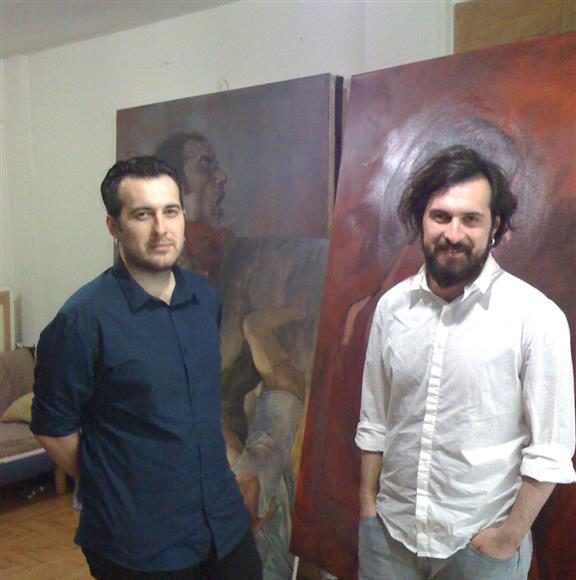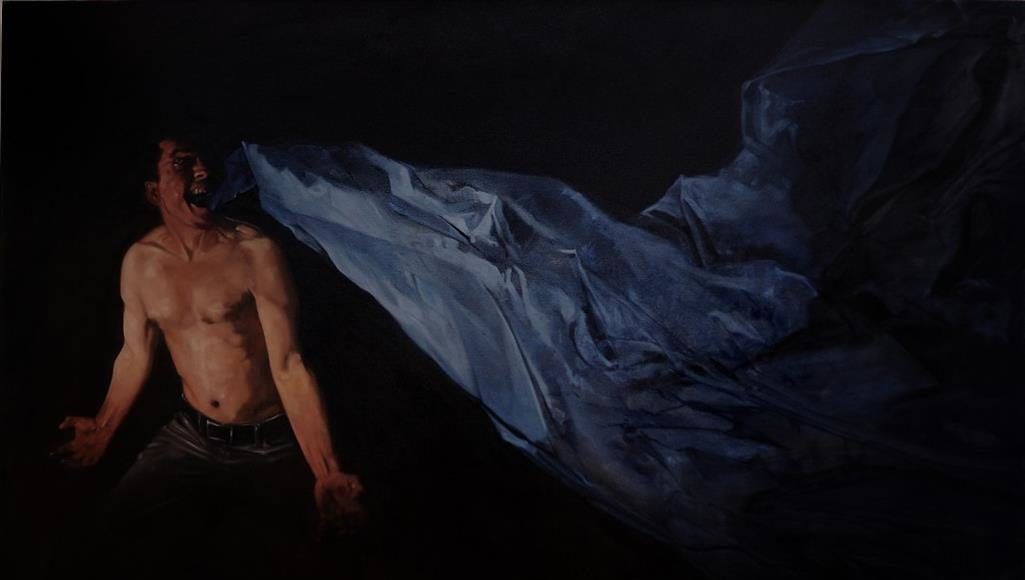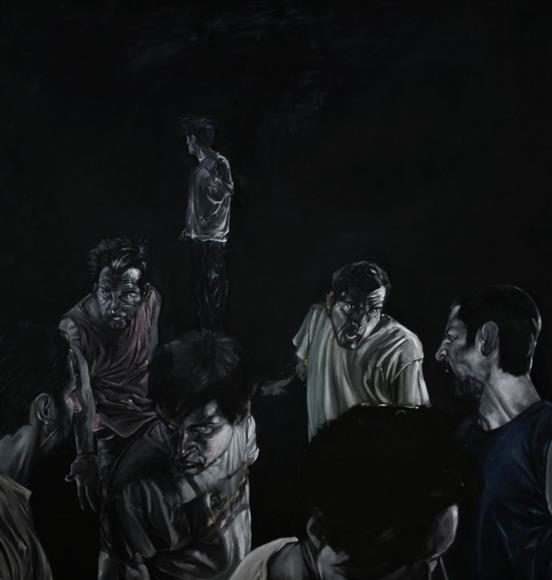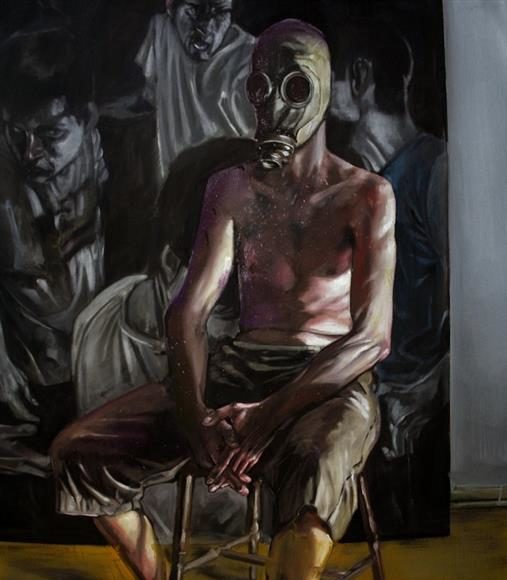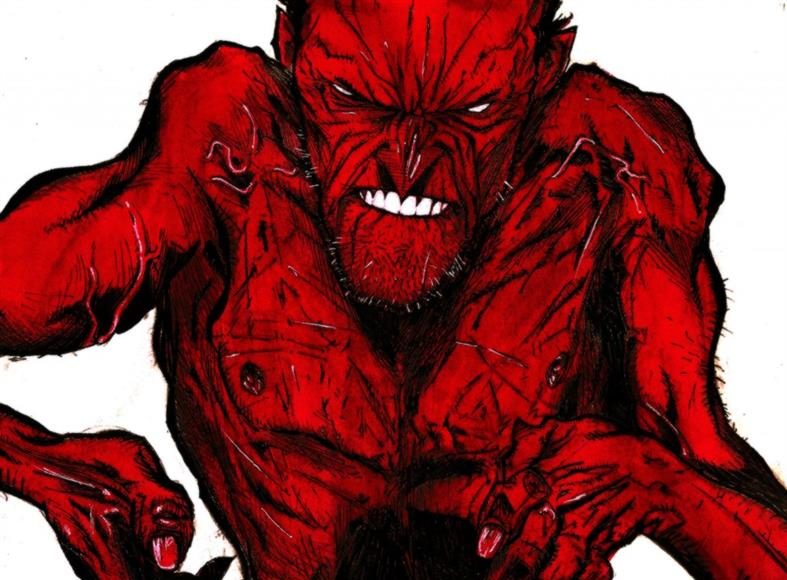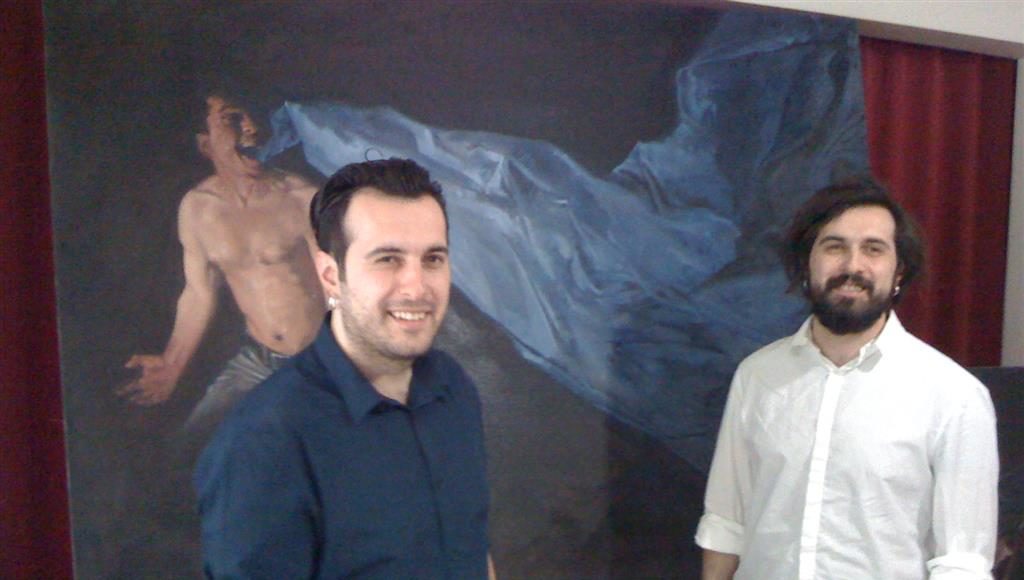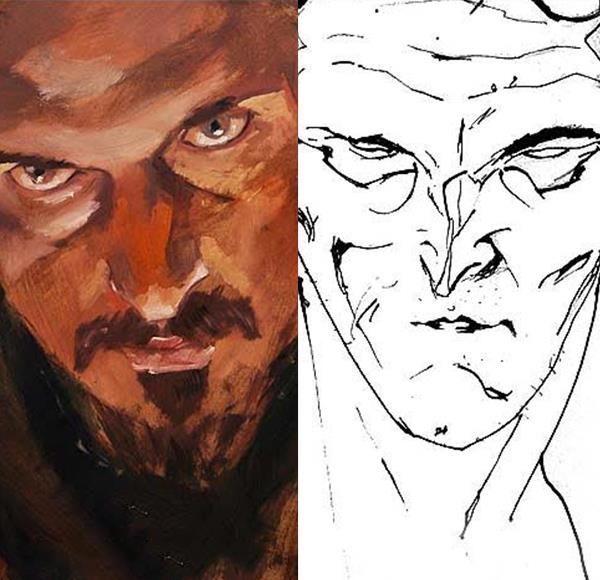By Billur Tansel
Identifying the artists and events that played significant roles throughout history of art and analysing their correlations is one of the great riches of art history. In art history, twin exhibitions, organized by curators on specific themes, often took place with two random painters, but it is rare to find artist brothers or twins that have had exhibitions together. If we take a look at the 16th Century Bologna, Italy, the Caracci brothers could be analyzed as an example to the latter; they were not twins but they were brothers that were very close in age and also because their styles somewhat resembled those of the Karasu brothers.
The Agostino and Annibale Caracci brothers were prominent figures of the 16th Century Italian painting. They worked together early in their career and even though they had to work at different projects afterwards, they preferred to stay close to one another. They were known for taking a stand against the Mannerist movement in the Italian painting.
As painter, etcher and engraver, Annibale Caracci exercized a more profound influence than another great contemporary artist of his time Caravaggio. The reason Annibale exercised a more profound influence was because he was also famous with his frescoes, whereas Caravaggio had never worked in fresco. The fresco was then regarded as the greatest test of a painter’s ability and the most suitable vehicle for painting in the Grand Manner.
Annibale’s mastery in figure composition carried him to the point of excellence; with the beauty and harmony of his colors, and his expertise in modelling, he was a rival to o famous masters. Also with his figure composition and his precision of gestures, he had a profound influence on the French painter Poussin. In Mustafa Karasu’s paintings, one can see a parallelism to Annibale Carracci’s works in the useage of forms, choice of colors and the depiction of the figures.
Agostino Carracci was a master engraver, and a good teacher. With their cousin, the two brothers started a private art academy that became a center for progressive art and trained the leading members of the following generation. The simplicity and plainness in Agostino’s expression can be encountered in Şerif Karasu’s works.
In addition to the latter, there is also a parallelism traced in the history of art in that Karasu brothers, similar to the Caracci brothers were together throughout their growing up and education.
Twin exhibitions present an excellent opportunity to observe and study reciprocal influences between the two artists. In this exhibition, Mustafa’s realistic figures meet with Şerif’s imaginary ones. But both artists show a general sense of anxiety and melancholy in their paintings.
The Karasu brothers that were born in year 1986, still continue their education in the Art & Design Faculty of the Yıldız Technical University in Istanbul. Thus, it is important to notice that even before their graduation, their successful, consistent work and their talent have taken their art to the point of taking part in exhibitions abroad.
The Karasu brothers, that draw a successful profile, share the same studio. According to Mustafa, his auto-portraits depicted in the most sincere and honest way, give the contemplator a chance to take a step into his intellectual world. The different communicative layers of the two brothers are presented to the viewer via the various means of expression in their works. However, it is possible to observe that both suggest a confrontation with time, as well as with the concepts of space and identity.
As Mustafa works with oil painting on canvas, Serif prefers to use ink and pencil on paper. Both artists’ subject matter is human figure but the differences in their perspective and approach gain dimension with the various techniques and the material that they use.
As Mustafa’s masterfully realized oil painting portraits and figures invite us to the canvases that depict the lives of the people full of melancholy and pain; Şerif’s linear approach adds an intellectual dynamism and variety; dragging us along at times to a naïve and story-like, and at others to an aggression-filled imaginary world. This is not the ‘now’ and ‘here’ determined by the time and space categories; the notion of space loses its importance.
According to the Karasu brothers, their composition, their theme are presented to the viewer via the colors and the brush strokes that they use. At the end stage, when the auto-portrait is finalized, the viewer becomes the viewed and the viewed becomes the viewer. The alternative worlds , where the being is questioned on a metaphysical dimension, are presented to us by the artists, as worlds composed of color and form combinations and charged with sentiments and the power of imagination.
Accepting the invitation of the artists, leaving the physical world that we live in aside and stepping inside the painting space would give us an opportunity to integrate into the alternative worlds that they suggest.
Mustafa Karasu questions the existence, non-existence issues. Everything is being posited around the human figure. Man is the measure of all things, it is the beginning and the end. Mustafa interacts with the viewer through his self-portrait. In the absence of the subject, the concept of space loses its value. He invites the viewer to the alternative world that he is the designer of. There is always a secret story in the paintings, waiting to be deciphered and full of clues.
The subject-space relationship gains importance here. The spatiality gains meaning through the presence of the subject. And under the hegemony of the subject, space represents the subject itself.
In the geberal sense, there reigns the obscurity just like in Caravaggio’s paintings. And just like Caravaggio, the artist renders his paintings more alive via the sentimental and intellectual bond he establishes with the viewer and the power of expression.
Mustafa’s sensational technique, his theatrical figure depictions, tense compositions, dramatic lighting and vivid contrasts of light and shade reminds us of Caravaggio’s approach. And with some of his figures staring out of the canvas, directly at the spectator, the artist creates a similar effect to that created by Velasquez in his famous work ‘Las Meninas.’ It is as though the figures in the painting judge the ones situated on the outside, and thus there forms a sort of communication between the spectator and the figures in the painting.
Şerif on the other hand, departs from a sense of simplicity in his paintings. His mastery in his drawing technique turns figures into living ones and thereby creates a certain dynamism. His elongated figures can be traced back to comics on one hand and the style to Egon Schiele on the other, with the linear simplicity, the form, the audacious color choices and the exotic and melancholic typecasting. As a variant of ‘art nouveau’, there is also an expressionist peak in Şerif Karasu’s approach. These figures stare at us from the imaginary and fictional world. There is naturalness in reign in these paintings.
Schiele had once said: “Painting is not enough for me, I know that one can create qualities with colors;” with the minimal amount of coloring that Şerif uses, this theory gains accuracy and the figures vividness. Though the colors the artist uses are not very pronounced in the general sense, in certain paintings, colors such as red, blue and yellowish green are apparent. His fictitious characters create a contrast with the worldly and realistic figures of Mustafa Karasu.
Although the two brothers’ paintings take part in the modern flux, they are still closely related to the medieval art. It is interesting how, considering that they have grown together and that they were educated together, their approach to life and painting are different.
The words of the 16th Century thinker Monataigne: “My business and art are my life and I am the subject matter of my own book”, seem to express what Mustafa and Şerif feel vis-à-vis their paintings. According to Mustafa, there exists a parallelism with their lives and their paintings. The departure point for their painting themes seems to be closely related o how and what they perceive in the mirror as they look at their own reflections. The investigations as to the human nature, are depicted with an expressionist approach and with their inner consciousness as their point of departure. Their adventure initiated in the form of lines, turns into a visualisation of their memory documented with concepts. In other words, even though they may have different approaches or techniques in their paintings, these differences form an integrity with their contradictory and complimentary natures.
Curator: Billur Tansel
Artists: Mustafa Karasu, Şerif Karasu
Gallery: Akademililer Sanat Merkezi, Beyoğlu, Istanbul


















